One million face local lockdowns to isolate virus
More than a million people in six Melbourne local government areas may be forced to stay at home under renewed lockdowns.
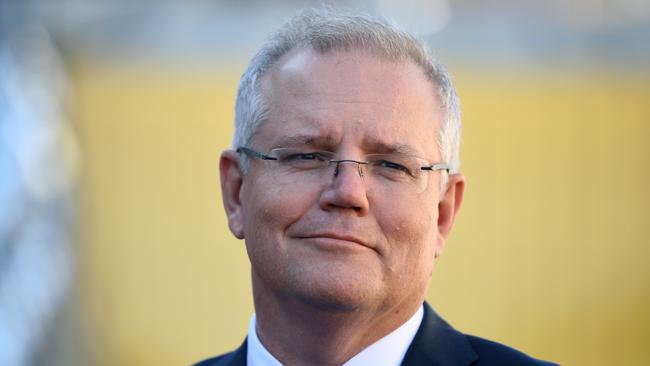
More than a million people in six Melbourne local government districts face renewed lockdowns from a coronavirus spike as Scott Morrison urges nervous premiers to keep opening up their economies despite higher Victorian infection rates.
A massive testing blitz was launched in coronavirus hotspots in Melbourne’s suburbs on Monday as Victorian Premier Daniel Andrews faced criticism of his handling of the Black Lives Matter protest this month, and the message that it sent the broader community about social distancing.
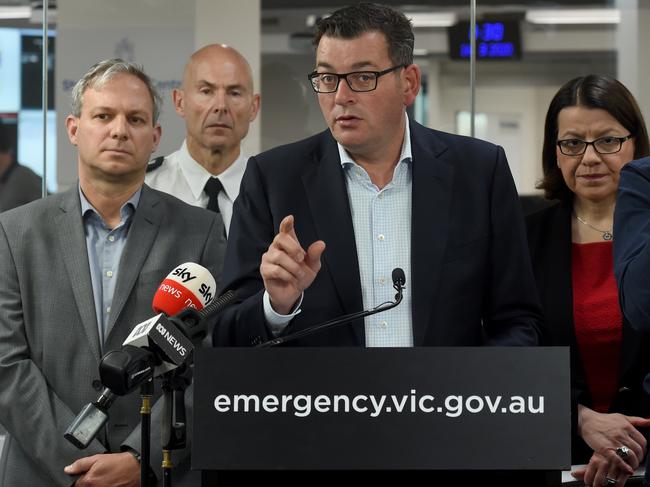
The Prime Minister urged states to continue the reopening process, warning Australia “can’t just shut up everything forever”.
Mr Morrison said he had never been aiming for “eradication” of COVID-19, but was instead attempting to “run our economy, run our lives (and) run our communities alongside this virus”.
“We can’t just shut everything up forever … There will be outbreaks; there will be cases,” Mr Morrison said.
“What matters is that we’ve built the protections to deal with them. And that’s why it’s so important that people don’t get complacent. This is … a wake-up call.’’
West Australian Premier Mark McGowan delayed a planned August 8 lifting of the state’s border closure as the South Australian government also warned the outbreak might delay the opening of the border with Victoria.
NSW Premier Gladys Berejiklian said she would continue her state’s easing of restrictions but issued a travel warning for Victoria, urging residents to avoid Melbourne’s virus hotspots and non-essential travel between the two states.
“We have to live with this until there’s a cure or a vaccine,” Ms Berejiklian said. “And it’s how you manage these spikes that allows the community to keep being able to be active and working and having a good life. So I appreciate what Victoria’s going through, but don’t assume it won’t happen in NSW or anywhere else.
“It can happen very quickly.”
In the seven days to Monday, Victoria revealed 121 cases of coronavirus, only 34 of which were in recently returned overseas travellers in hotel quarantine. Monday’s 16 new cases included a fourth case of a person who attended the protest in Melbourne’s CBD on June 6 and caught the virus.
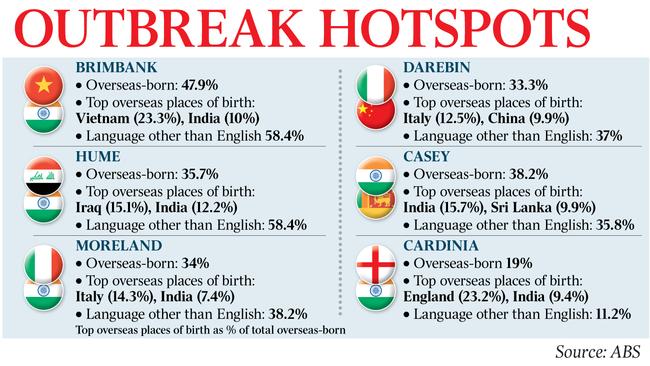
The state’s Chief Health Officer, Brett Sutton, said more than 1000 close contacts of Victoria’s 125 active coronavirus cases had been identified and he expected the elevated numbers of new cases to continue for some days.
The Australian Health Protection Principal Committee listed six local government areas as hotspots, including Hume and Brimbank in Melbourne’s north and west, with 11 active cases each, Casey and Cardinia in the southeast with nine and five cases respectively, and Moreland and Darebin in the north with six and four cases respectively.
Not listed were: Maribyrnong, in Melbourne‘s inner west, which has seven active cases including two new ones on Monday; and Whittlesea, on Melbourne’s northern outskirts, which has six active case, including one new one on Monday.
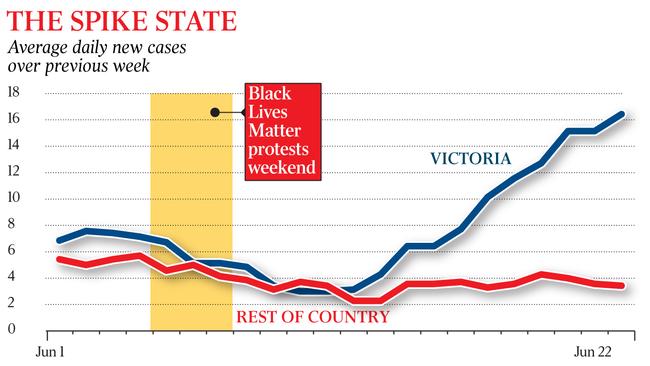
Victorian Health Minister Jenny Mikakos said the AHPPC advice was aimed at preventing the spread of the virus further afield in Australia.
“In the legal directions that have come in today, we have not issued stay-at-home directions for those hotspot areas, but of course we don’t rule anything out,” Ms Mikakos said.
Restrictions in the six local government districts could include not being able to leave the area.
Chief Medical Officer Brendan Murphy said there was no reason for the Melbourne spike to affect other jurisdictions in rolling back their coronavirus restrictions.
Health figures from Monday show there are two people currently being treated in ICU for COVID-19, both in Victoria. There are also about 10,000 ventilators available to hospitals, with about 6000 currently in hospitals nationwide and 4000 more in a national stockpile.
Reserve Bank governor Philip Lowe said Australia’s success in containing the virus meant the economic fallout from the health crisis so far was “not nearly as bad as we anticipated”.
Dr Lowe again stressed the need for reform to help the economy escape a “meandering” and “low-growth” future.
As a measure of the eventual damage to the labour market, total hours worked were now expected to fall by 10 per cent in the June quarter, compared with an initial prediction for a 20 per cent collapse, Dr Lowe said.
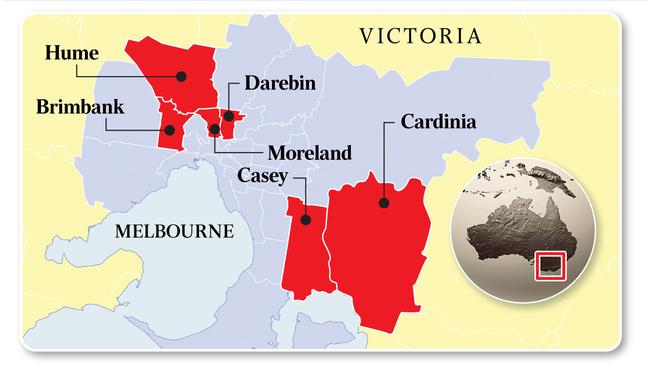
Speaking on an ANU Crawford School panel, the RBA governor warned that the “shadow” cast over the economy from the health crisis could last “perhaps for years”.
“We can move out of that shadow slowly or quickly,” he said.
More than 90 per cent of the Australian economy is now “operational”, according to JP Morgan estimates, as the success in stopping the spread of the virus has allowed an earlier than expected easing of social-distancing measures.
Deloitte Access Economics partner Kristian Kolding warned that the lifting of restrictions raised the risk of a “second wave” of infections, which, were that to happen, could deal a $110bn hammer blow to the economy over the next 18 months.
Mr Kolding said their worst-case scenario was that instead of a modest 1.6 per cent recovery in GDP in 2021, the economy could contract by a severe 6.6 per cent — equivalent to $110bn in lost output over the next 18 months — and unemployment could remain elevated at 10 per cent through to the end of next year.
Professor Murphy said while the Victorian spike in cases “obviously was of concern”, there was no evidence that it constituted a second wave. “If this outbreak escalated and we had several hundred cases, that would be the sort of situation where I would be extremely concerned,” he said.
“At the moment, I have great confidence in the Victorian response. They are responding very effectively and we need to watch things over the next few days to see how it happens, but the early signs are that it is not escalating at the moment (and) we have to make sure it is brought under control.”
Federal Liberal MP for La Trobe, Jason Wood, whose outer southeastern suburban electorate straddles Casey and Cardinia, says the Black Lives Matter protest had “flicked a switch” and signalled to the broader community that it was acceptable to relax social-distancing behaviours.
“My background is policing, so I knew that when the Premier made those comments — that they weren‘t going to be charging those who attended — that everyone else would put their guard down. Straight after the protest we observed that things around here almost returned to normal; people were getting out and about a lot more. I got in touch with a lot of businesses last week and people were really excited about opening up a bit more, getting their employees back to work. People are really quite annoyed.”
Victoria on the weekend reversed plans to increase the maximum number of patrons in hospitality businesses from 20 to 50 as health authorities said they expect to see elevated numbers of new cases.
Health authorities held crisis meetings with executives and mayors of affected municipalities on Monday. Their biggest concern was the spread of the virus through family groups, with investigations under way into links between new cases in a student and a teacher at Albanvale Primary School in Melbourne’s west, and a cluster associated with a Keilor Downs family that comprises 11 cases across nine households.
As the health department bolstered testing on Monday — targeting students, teachers and family members at affected schools, opening new pop-up testing centres and extending opening hours at existing facilities in affected communities — a community engagement team of 50 public health officials began doorknocking in Brimbank and Cardinia.
Victorian officials do not attribute a cluster of four COVID-19 cases so far linked to the H&M store at Northland shopping centre in Melbourne‘s north to the Black Lives Matter protest, despite two of the infected staff members having attended the rally.
The 10,000-strong protest went ahead on Saturday, June 6, after the Andrews government advised people not to attend, but backed a Victoria Police decision not to fine attendees.
ADDITIONAL REPORTING: REBECCA URBAN, JOE KELLY, JOHN FERGUSON


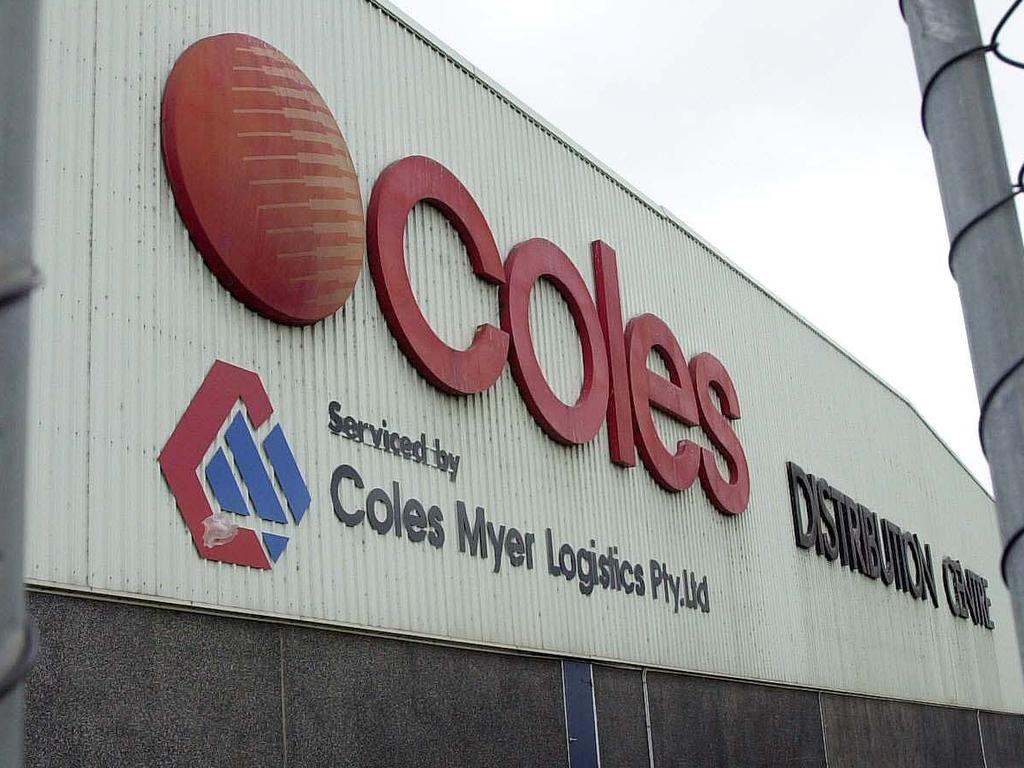

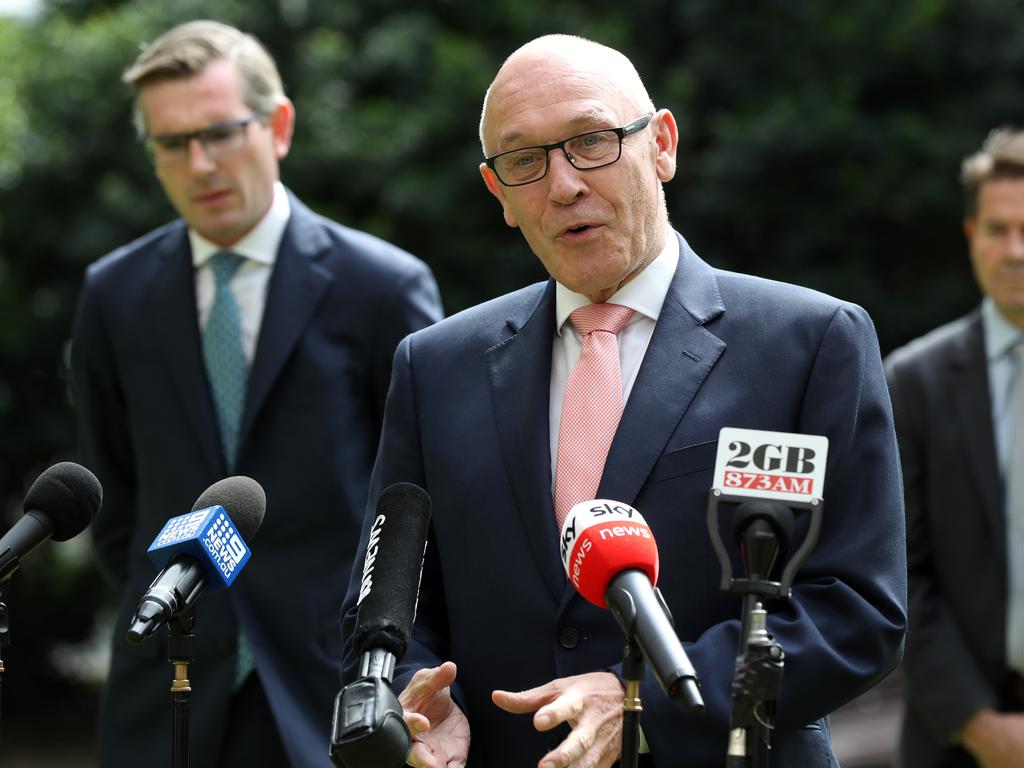


To join the conversation, please log in. Don't have an account? Register
Join the conversation, you are commenting as Logout